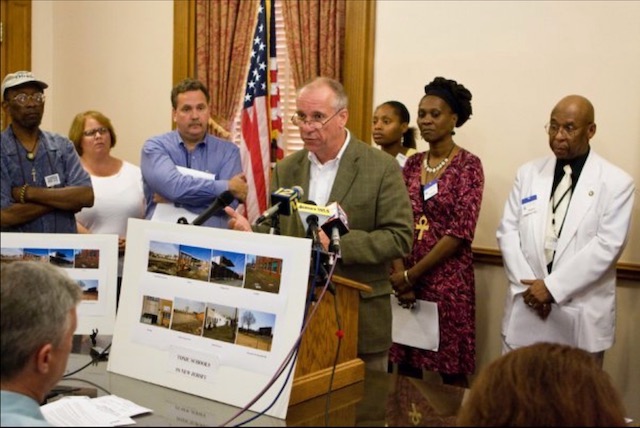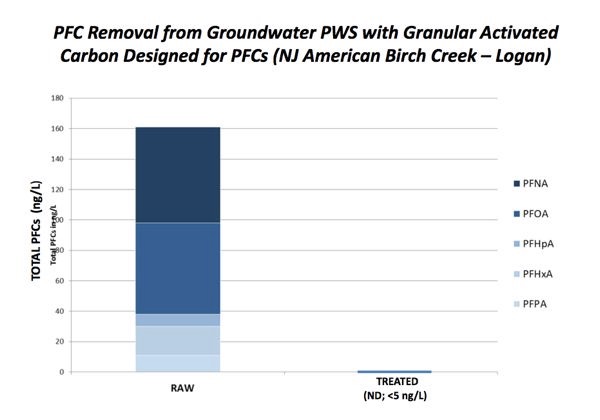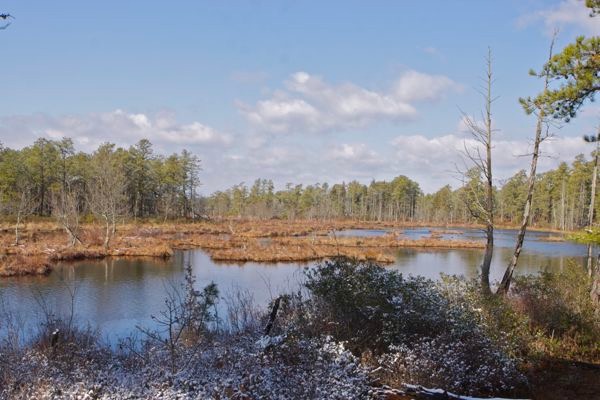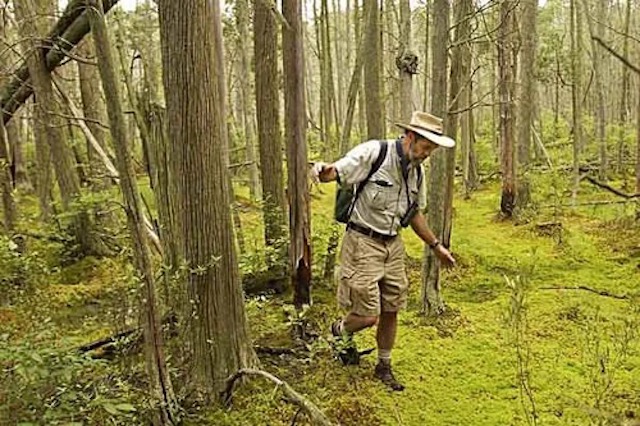Remarks Almost A Caricature Of Ineffective Activism
But hey, he’s got some great posters!

NJ Spotlight reporter David Cruz’s show “Chat Box” featured a very interesting conversation with “environmental and social justice activist Marcus Sibley and Jeff Tittel, former director of the New Jersey Sierra Club, [who] talk about climate change and the environment in the state.”(listen, segment starts at time 13:35).
At the outset, I must note that Mr. Sibley was not properly identified – he works for the Northeast Office of the National Wildlife Federation as Director of Conservation Partnerships. His boss is my old friend Curtis Fisher, formerly head of NJ PIRG and an environmental policy advisor to Gov. McGreevey.
To give you just 2 quick examples of how far my friend Curtis has fallen from his current well feathered roost up in Maine at the NWF from when I worked with him in NJ: [also see End Note]
1) Curtis ran a campaign opposing the Whitman administration’s deregulation of energy. He toured the State and held protest events with a flatbed truck with a 30 foot tall screw under banners “You’re Screwed!” Where have those bold activist tactics gone?
2) Curtis served as inside champion and diplomat for my work at DEP and Jeff Tittel’s at Sierra Club to convince Gov. McGreevey to back the Highlands Act. It wouldn’t have happened without him. Where has the focus on strong legislative standards gone?
Now, at NWF, Curtis’ NJ partner is Exxon Mobil backed NJ Audubon. Yikes! How the mighty have fallen.
I also note that I was previously Policy Director or NJ Chapter of Sierra Club and worked with Jeff Tittel for more than 6 years and maintain a friendship with him.
There is no better conversation to illustrate what’s wrong with the current situation, particularly the approach of what passes for today’s environmental activists and the destructive role of identity politics (as I’ve written many times, what professor Nancy Fraser calls “Progressive Neoliberalism”).
The conversation began with a Cruz question to Tittel as to whether NJ has made any progress since Sandy.
Tittel accurately and bluntly described the situation:
No. In fact I think we’ve gone backwards because we’ve allowed all this development to happen down the shore in some of the most vulnerable areas when it comes to sea level rise and storm surge. … We built back a lot of hat was destroyed by Sandy in the same location, … so we’re really becoming more vulnerable.
Mr. Sibley was then asked for his views. He contradicted Tittel’s devastating critique with this:
I think, I think we’re doing a good job. There’s always more work that can be done. We’ve definitely acknowledged what’s been causing these storms
What. The. Fuck? Strike 1.
Sibley was then asked to identify the biggest collective success and failure coming out of Sandy. He replied:
I’ll start with the biggest failure. We really don’t understand how we have to meet this moment. We are in a climate crisis. … The biggest success is that we see what’s been happening in a lot of low and moderate income black and brown communities. The flooding that happened under Sandy has been happening in black and brown communities all along.
What? Where do you begin to deconstruct that?
Happening all along? Sandy was a 1,000 year storm that killed 38 people in NJ. It caused $37 billion in damage. That scale of destruction clearly has not “happened all along” in poor black and brown communities. There was no racial component to Sandy’ storm surge and flood elevations. It is true that poor, black and brown people frequently live in the most hazardous locations and least desirable real estate, but the magnitude of Sandy literally swamped those discriminatory land use practices (pun intended). The EJ land use issues are clear, they don’t need to be exaggerated by false Sandy claims.
We “don’t understand”? There is no lack of scientific, technical, legal, and financial understanding on how to “meet this moment”, both to reduce greenhouse gas emissions, transition to renewable energy, and mitigate some of the worst impacts (excluding extreme heat, which is an existential threat to human survival).
The current Murphy DEP Commissioner also likes to blame the public and claim there is a lack of public awareness. Former Corporate lawyers and bureaucrats always point the finger – diverts from their failures.
Tittel provides an opposite take on that same question:
The success is public awareness of climate change and flooding. The failure is that we haven’t stemmed the tide or come anywhere close … we’ve just barely begun to scratch the surface. Even though we have a lot of public support we have to get the political will to make climate change one of the top issues facing the voters and holding politicians accountable to make sure they actually do things and not just give lip service.
But, it gets even worse. Much worse.
Cruz then tries to stop the bleeding and bail Sibley out with a softball question about neglect of urban areas.
Sibley’s reply was pretty good in describing disproportionate environmental and health impacts in poor, black and brown communities. I completely agree with him, but he lacked any specifics or any linkages to what DEP is doing in permit programs and failure to implement the seriously flawed EJ law.
[Before readers assume my criticisms stem from a clueless, racist, old white man privileged perspective, check out how I write and talk about these urban EJ issues, and have done so for a long time, certainly long before the major Foundations began grant funding and the National Wildlife Federation did, e.g.

Take a look at all these toxic emission sources – and this is not counting the Port, which creates regional impacts. All that toxic pollution isn’t just blowing over to Staten Island! Inmates and staff of Essex County jail are being “air boarded” every day! (We’ve heard about episodes of waterboarding at Guantanamo and torture at Abu Ghraib, but not about daily “toxic air boarding” at Essex County Prison.)
Cruz then asks Sibley why politicians are not responding and here’s where Sibley starts to go off the rails, and badly.
Sibley correctly notes that the core issue is political power. I agree.
But Sibley blames the victims for their lack of power! And he ignores the corporate criminals and their government puppets!
And he blames social justice activists who seek “more attention” and focus on things like police violence at the expense of “investing” in climate.
Sibley neglects to mention real problems. According to Sibley (by what he says and doesn’t say), the problem is not powerful corporation, billionaires, captured government, a rigged system, and corrupt politicians. The problem is not Gov. Murphy and the DEP and the NJ legislature. The problem is not a depleted lapdog stenographic corporate owned media who fail to cover the stories and hold the powerful accountable. The problem is not totally ineffective but well funded co-opted cheerleading environmental groups. The problem is not fake activists who play inside games and give politicians passes and political cover. The problem is not because the activists have abandoned traditional activism in favor of DEP “Stakeholder” meetings, press events with the Governor, and social media and identity politics. No, it’s none of that.
No, the problem is those poor black and brown people who don’t vote hard enough for politicians who provide no more than “lip service”. It’s those activist who seek “more attention” and are “not invested” in climate and EJ issues.
Sibley provided this deeply troubling assessment:
Politicians are not talking about it because they don’t feel this group has enough political power. It all comes down to power. So this is why we encourage all communities to get out and vote and not only vote to hold people accountable. … We have the numbers to make change, but a lot of people aren’t really invested in this particular topic because other topics give more attention. So, like police brutality is a police issue. That will get more attention than pollution, but pollution, air pollution specifically, is killing more black people than anything. This is one of those issues where we have to make sure we’re focused on social justice and policy brutality and criminal justice issue. But we also have to get engaged in what’s happening with our climate because that’s just as important.
Sibley then gets the political manipulation by politicians correct, but in doing so he went on to even more pointedly blame the victims and other social justice activists, while ignoring and giving a pass to those who hold real economic and political power:
Because we aren’t focusing our attention on it [climate] like we should, politicians think that they can just come around, 3 or 4 weeks before an election, hug a couple of people, shake a couple of hands, and that counts as their engagement with the community. So the community has to do more to show that they are viable.
You mean hug a few people and shake some hands like Gov. Murphy and DEP Commissioner LaTourette repeatedly do with members of NJ Environmental groups and EJ activists? Strike 2.
Cruz then asks Tittel if the environmentalists need a “Super PAC”, which of course Tittel dismisses as he lays out what kind of activism works (a backhanded criticism of current environmental groups who back Gov. Murphy and DEP):
We got things done because we showed up. … We need to go to the streets, we need to go to the barricades, we need to protest, we need to lobby.
We got a lot of important things done in this state because we stood up to the politicians and we made the environment an issue. We didn’t just sit and go to meetings where they get a chance to tap dance around us. We actually grabbed power by being politically active…. We have to not only get to the streets we have to mobilize … like we were doing before COVID with some of the student groups around the country that were demonstrating.
Now here’s where Sibley’s total collapse comes.
After Tittel just explained what works, what does not work (e.g, insider games and meetings) and the absolute imperative to hold government officials and politicians accountable, Sibley said this in response to Cruz’s question on “the environmental record of the Murphy Administration”:
I would say that the Murphy administration is doing a really good job.
A heckofajob! (Sibley here sounds more like the man Cornel West called the “black mascot of Wall Street” than his poster heroes Baldwin and Malcolm!)
After the Murphy administration diverted millions of renewable energy funds, has seriously harmed NJ’s solar industry – leading the industry to fear “collapse” – and just days after the Murphy BPU punted on financing off shore wind transmission and PSE&G publicly threatened to terminate their investment in off shore wind, amazingly, Sibley then said this:
There’s been absolute investments in off shore wind and and other renewable energy sources. So we’re excited about that.
Sibley, despite Tittel’s direct criticism, then exposed the harm from playing inside games and elevating identity politics above policy:
I’m fortunate to be on a couple of coalitions that work directly with the Governor’s Office to make sure we putting the input and that equity is at the forefront of everything that we’re doing. So, in that regard, the Governor’s Office has been absolutely open to feedback and criticism at times as well. But also, we need to continue to push because incongruent decisions are made. So, on one end, we’re pushing toward renewables but in the next sentence we will make a reinvestment in a fossil fuel project….
I truly believe that we can continue to make these investments and work together, we could help the planet and help the people that have been exploited.
Strike 3, you’re out, Mr. Sibley (but nice tie, handkerchief, and posters!)
[I wonder if Mr. Sibley and his coalitions were invited to the Gov.’s decision briefing meetings on his $1 billion PSE&G nuclear bailout (increasing at $300 million/year), or the amendments gutting of the EJ bill, or expansion of the NJ Turnpike, or permits for LNG export, or denial of Empower NJ’s petition for rulemaking to impose a moratorium on new fossil infrastructure, or the many flaws in the BPU Energy Master Plan, or the DEP’s massive Clean Water Act water quality standards “variance” loophole, or DEP’s Pinelands logging plan, et al]
Tittel then further embarrasses Sibley and sets the record straight on the Murphy administration’s record:
I think the Murphy administration has been a lot of talk and no action. Every major Christie rollback, from costal rule to dealing with flooding, are still in place … 5 years after he became governor and 4 years after he promised to get rid of those rules and replace them with stronger rules. We’re still working under the same rubric of Gov. Christie rollbacks, giving out [DEP] permits in places we shouldn’t build. (more)
Off shore wind is good, but there’re no guarantee that any of that off shore wind is going to replace any on shore fossil power plants. At the same time thee Governor talks about off shore wind, [DEP] is permitting fossil projects throughout the state. … So there’s been a lot of talk …. but we have to see deliverables. It’s 10 years after Sandy and we have yet to see one rule proposed and adopted that actually deals with climate change across the board. We have to reform our coastal programs that are still pro-development and don’t look at flooding from climate change. And it’s across the board. And unfortunately I think that the Governor likes to play to the audience, but there have to be deliverables and the deliverables are not there yet and time is running out for us and for the planet.
Ouch!
And the NJ Spotlight producers/editors obviously get it, because Tittel’s remarks were made against video showing environmental cheerleaders embracing the Gov. during his toothless Executive Order signings!
[End Note: If you’ve gotten this far, you must be a wonk, so 2 more points that can take Curtis off the false pedestal I created and more accurately portray Curtis Fisher and shed more light on his compromises:
1. Curtis was involved in all the political deals that paved the way for passage of the Highlands Act, including a score of amendments that significantly weakened the introduced version of the bill I was involved in drafting, S1, including something like 17 exemptions!
2. During the Whitman administration, before Tittel arrived at Sierra, I was Acting Director. Whitman DEP supported and the legislature passed a really bad “Grace Period” bill that would have gutted DEP enforcement. Here’s Whitman confirming what that bill was all about in her US Senate Confirmation testimony as Bush EPA Administrator in a typical Whitman highly misleading response to a Question by notorious climate denier Senator Inhoffe:
Rather than giving them a letter or a notice of violation immediately with the fine attached, we go to them saying, these are the problems. This is what is happening. How are you going to clean it up? What can we do to work with you to clean it up? We give them a grace period in which they can resolve the problem, without resorting immediately to the threat of fines and sanctions.
But here’s the accurate description of Whitman in the New York Times of December, 26, 2000 (``Two Grades, One Record,” pps. 1 & 26.):
. . . she cut its budget (NJDEP) by 30 percent and laid off hundreds of workers. She ordered that State regulations be no more stringent than Federal rules. And she cut inspections, eliminated penalties and introduced grace periods for violators, to the point that collections of environmental fines plunged 80 percent. Adopting the motto “Open for Business,” Governor Whitman eliminated the environmental prosecutors Mr. Florio had introduced, and replaced a public advocate’s office, which had at times sued the State on behalf of environmental groups, with a business ombudsman’s office to guide businesses through the permitting process. And she sought to move away from punitive measures toward voluntary compliance. (P.26)
After the Grace Period bill passed, I took the lead and wrote the environmental community’s letter to Whitman requesting that she veto the bill. The letter flagged 7 fatal flaws. We got a meeting with Whitman’s Chief of Staff Eileen McGuiness. Curtis was there and at the time, he was a Trenton leader, while I was a relative newbie in ENGO circles, after a decade at DEP.
She went around the room, seeking a compromise, and asked for each group to priorities 1 or 2 issues that the Gov. might include in a Conditional Veto (CV). When it was my turn, I insisted on all 7 issues in the letter. McGuiness got red faced angry. She said we were not going to get everything we wanted and that the meeting was over if I insisted on all 7. I remained at the meeting.
About a half hour later, at the end of the meeting, McGuiness again surveyed the group seeking 2 or 3 priority issues. Again, when she got to me, I insisted on 7.
In the Statehouse hallway after the meeting, Curtis angrily chewed me out for violating negotiating basics, and said I harmed his and everyone’s credibility.
But I knew I was right, I knew the bill was very bad, and I was not going to comprise and cut any dirty deal.
And Whitman did issue a CV and it included every single one of my 7 demands!
The legislature concurred and the bill was enacted into law and it still sucks, but it could have been much, much worse, especially if people had followed Curtis’ compromised political instincts.
Here’s Curtis leading his pack of cheerleaders at Gov. Murphy’s second inaugural in some corporate venue in the NJ Meadowlands. It’s kind of the opposite of that classic scene where Emerson tries to bail Thoreau out of jail for not paying his taxes. Emerson says, Henry, what are you doing in there? Thoreau replies: Ralph, what are you doing out there? Curtis and friends: what the hell are you doing in there?









